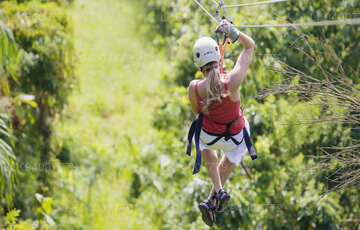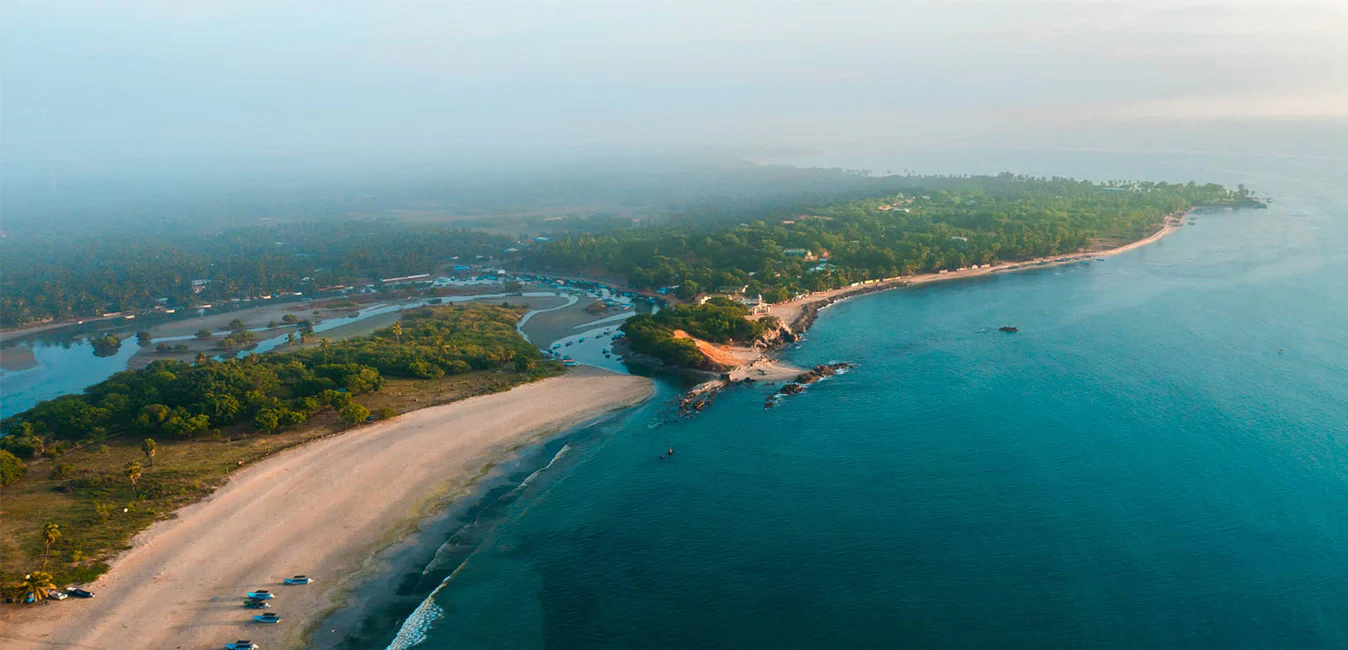

Trincomalee City
Trincomalee, located on the northeast coast of Sri Lanka, boasts a natural deep-water harbor and pristine beaches. Rich in history, it features landmarks like the ancient Koneswaram Temple. The city's diverse marine life and vibrant culture make it a captivating destination for tourists and historians alike.
Strand von Trincomalee
Einer der schönsten natürlichen Tiefwasserhäfen der Welt, liegt an der Ostküste Sri Lankas, etwa 245 km von Colombo entfernt. Es gibt einen Bericht über „Gokanna“, wie es während der Anuradhapura- und Polonnaruwa -Zeit genannt wurde und große Seefahrten vom Kaliber Marco Polo und Ptolemäus anzog. Die Briten, die ihr Imperium errichteten, befestigten es mit der Festung Fredrick, die bis heute mit intakten Kanonen Wache hält. Der Zugang zum Naturhafen ist die kleine niederländische Festung, die beide zusammen stehen. Der berühmte Swami-Felsen (Liebessprung) befindet sich im Inneren der Festung, wo man von einer Klippe neben einem der „Koneswaran“, einem der ältesten hinduistischen Kovils der Insel, ins tiefe Wasser springen kann. Die meisten Strände in der Gegend sind breit und das Wasser ist kristallklar. Ein Ort, den Sie sich nicht entgehen lassen sollten, ist der Marmorstrand. Am besten nutzen Sie die Auswahl an Hotels, die Ihnen einen Blick aus der Vogelperspektive auf die China Bay bieten.
Etwa 16 km weiter nördlich befindet sich der Strand „Nilaweli“ mit der berühmten Taubeninsel. Die Korallen rund um die Insel sind unserer Meinung nach ein großartiger Ort zum Schnorcheln und die roten Felsen, die nur 2 km vor der Küste liegen, sind mit einem kleinen Boot erreichbar. Das Dorf „Kanniyai“ verfügt über 07 Brunnen, die mäßig warmes bis sehr heißes Wasser enthalten und für ihre medizinischen Eigenschaften bekannt sind.
Unserer Meinung nach hat Trincomalee alles zu bieten, ob Strandaufenthalt, Tauchen zu einem Schiffswrack, Schnorcheln im kristallklaren Wasser, Walbeobachtung in der Bucht oder Kitesurfen – und das alles in einer Stadt auf einer Landzunge, die den riesigen Hafen dahinter natürlich schützt Es ist auch eine Marinestation der srilankischen Marine.
About Trincomalee District
Trincomalee is a port city on the east coast of Sri Lanka. The Bay of Trincomalee's harbour is renowned for its large size and security; unlike every other in the Indian Sea, it is accessible to all types of craft in all weathers. The beaches are used for surfing, scuba diving, fishing and whale watching. The city also has the largest Dutch fort in Sri Lanka. It is home to major Sri Lankan naval bases and a Sri Lankan Air Force base.
Most of the Tamils and Sinhalese believe that this place is sacred to them and they are the indigenous people of the area. Trincomalee and its environs have both Hindu and Buddhist sites of historical importance. These sites are sacred to the Hindus and Buddhists.
About Eastern Province
The Eastern Province is one of the 9 provinces of Sri Lanka. The provinces have existed since the 19th century but they didn't have any legal status until 1987 when the 13th Amendment to the 1978 Constitution of Sri Lanka established provincial councils. Between 1988 and 2006 the province was temporarily merged with the Northern Province to form the North-East Province. The capital of the province is Trincomalee. The Eastern province's population was 1,460,939 in 2007. The province is the most diverse in Sri Lanka, both ethnically and religiously.
Eastern province has an area of 9,996 square kilometers (3,859.5 sq mi).The province is surrounded by the Northern Province to the north, the Bay of Bengal to the east, the Southern Province to the south, and the Uva, Central and North Central provinces to the west. The province's coast is dominated by lagoons, the largest being Batticaloa lagoon, Kokkilai lagoon, Upaar Lagoon and Ullackalie Lagoon.

















